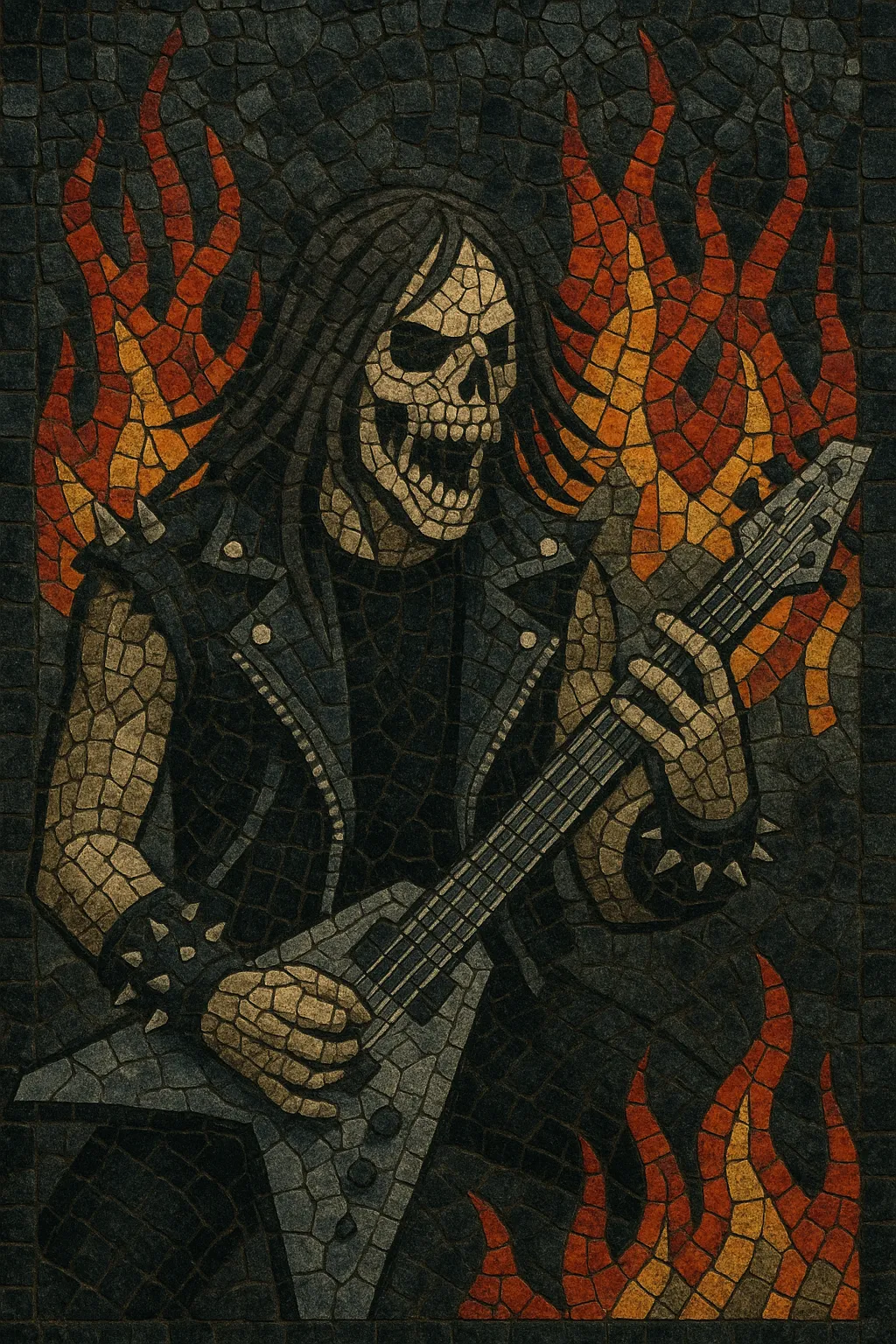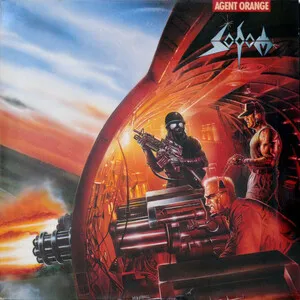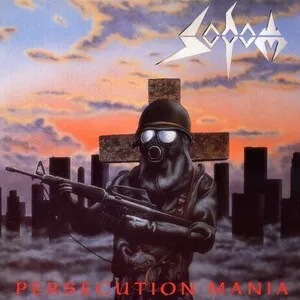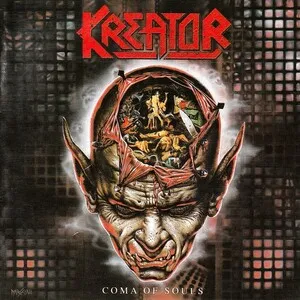Teutonic thrash metal is the German branch of 1980s thrash known for its raw aggression, grim atmosphere, and razor‑edged precision. Compared to the Bay Area’s more technical or melodic variants, it favors harsher vocal deliveries, darker harmonies, and a relentless, martial drive.
Hallmarks include down‑picked, palm‑muted riffs at high tempos; skank beats and double‑kick drumming; biting, mid‑forward guitar tones; and venomous, barked or rasped vocals. Riffing leans on minor, Phrygian, and chromatic motion with frequent tritone color, while solos range from chaotic, whammy‑driven flurries to shrieking modal runs. Lyrically it often tackles war’s horrors, apocalypse, social decay, and anti‑authoritarian themes, reflecting a bleak, uncompromising outlook.
Rooted in Germany’s industrial Ruhr region, Teutonic thrash metal emerged as young bands digested the speed and aggression of US thrash, the riff craft of the NWOBHM, and the extremity of first‑wave black metal. Demo trading, fanzines, and small venues forged a hyperactive underground network. Early EPs and albums—Sodom’s “In the Sign of Evil” (1984) and “Obsessed by Cruelty” (1986), Destruction’s “Sentence of Death” (1984) and “Infernal Overkill” (1985), Kreator’s “Endless Pain” (1985) and “Pleasure to Kill” (1986), and Tankard’s “Zombie Attack” (1986)—defined the scene’s raw, hostile sound.
Labels like Noise Records and SPV gave German thrash a global platform. The “Big Teutonic Four”—Kreator, Sodom, Destruction, and Tankard—toured extensively, while peers (Holy Moses, Protector, Assassin, Exumer, Deathrow, Living Death) expanded the style’s reach. Teutonic thrash distinguished itself via harsher vocals, darker riffing, and a bestial ferocity that edged toward proto‑death and proto‑black metal.
As grunge, groove metal, and death metal rose, many bands faced shrinking audiences and stylistic crosswinds. Some experimented (e.g., industrial/gothic tinges, streamlined songwriting), while others paused or disbanded. Nevertheless, the classic albums continued to influence emerging extreme metal movements.
A 2000s thrash resurgence reignited interest. Kreator, Sodom, and Destruction returned to form with modern production and tight, aggressive writing; festivals like Wacken and labels such as Nuclear Blast and Century Media supported renewed global visibility. Newer European acts absorbed the Teutonic DNA, and the style’s intensity helped shape blackened thrash, war metal, and strands of death and melodic death metal. Today, Teutonic thrash remains a benchmark for ferocity and discipline within the thrash spectrum.







